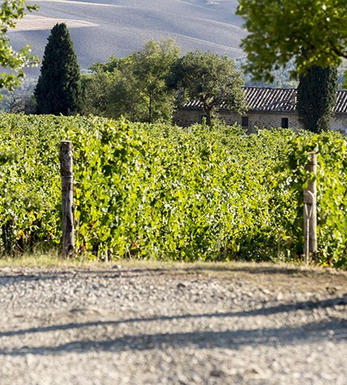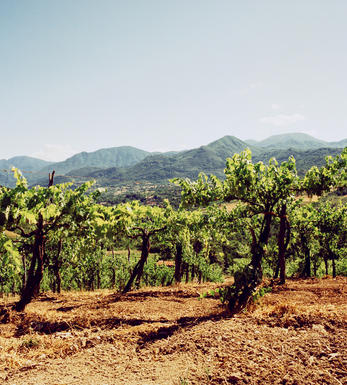
Brunello di Montalcino, II Poggione 12-Bt Collection Case (12,13,14)

About this WINE

Il Poggione
Il Poggione is a winery steeped in history with its origins dating back to the late 1800s. Owned by Leopoldo and Livia Franceschi , it is situated below the beautiful hilltop town of Sant’Angelo in Colle, a part of the Brunello di Montalcino appellation characterised by temperate, yet well-ventilated micro-climate. This benefits the grapes by maintaining refreshing acidity levels and extending their ripening time.
Father and son winemaking team Fabrizio and Alessandro Bindocci coax the best from these privileged vineyard sites; they are also proponents of a traditional wine-making style which includes submerging the cap with frequent pump overs (for more colour and tannin extraction), and ageing in large casks (so that wood flavours remain subtle and do not interfere with the natural expression of the Sangiovese and the Sant’Angelo terroir).
The Riserva bottling, made in the finest vintages, receives at least one year extra ageing in French oak casks. The typical style is intense, full-bodied, powerful, packed with dark fruit, menthol, sweet smoke, cocoa and spice flavours and a hint of earthiness.
In the best vintages the wines demonstrate extraordinary development in bottle. Even better, prices have remained very reasonable, considering the superb quality of the wine. Poggione’s straight Brunello is one of the most fairly-priced, cellar worthy wines of the appellation.
This is a benchmark property for fine, traditionally made Brunellos capable of ageing superbly.

Brunello di Montalcino
Along with Chianti, Brunello di Montalcino is Tuscany's most famous DOCG and the region's boldest expression of Sangiovese. Located 30 miles south of Siena with the hilltop town of Montalcino as its epicentre, its 2,000 hectares of vines are naturally delimited by the Orcia, Asso and Ombrone valleys. Brunello is the local name for the Sangiovese Grosso clone from which Brunello di Montalcino should be made in purezza (ie 100 percent).
The Brunello di Montalcino DOCG has a whale-like shape: at its head, at 661 metres above sea level on ancient, stony galestro soils facing east and southeast lies the town of Montalcino, where the DOC was founded. As you follow the spine south towards the tail, the vineyards lose altitude – those around Colle Sant'Angelo are at 250 metres – while the soils become richer with iron and clay. Further east, in the shadow of the 1,734 metre Mont'Amiata lies the village of Castelnuovo dell'Abate where the vineyards are strewn with a rich mix of galestro, granitic, volcanic, clay and schist soil types.
Historically, the zone is one of Tuscany's youngest. First praised in 1550 by Leandro Alberti for the quality of its wines, it was Tenuta Il Greppo who bottled the inaugural Brunello di Montalcino in 1888. By 1929, the region had 925 hectares of vines and 1,243 hectares of mixed crops, while in 1932 it was decreed that only those wines made and bottled within the commune could be labelled as Brunello di Montalcino. Since then, the number of producers has risen from 11 in 1960 to 230 in 2006, while over the same period the vineyards have expanded from 1,000 hectares to 12,000. The region earned its DOC in 1966, and was upgraded to DOCG in 1980.
Brunello di Montalcino cannot be released for sale until five years after the harvest, or six years in the case of Brunello di Montalcino Riserva. During this time the wines should be aged for at least two years in oak, followed by at least four months in bottle (six months for Riservas); maximum yields are 55 hl/ha.
Rosso di Montalcino is declassified Brunello di Montalcino, released for sale 18 months after the harvest.
Recommended producers: Costanti, Fuligni, Lisini, San Giuseppe, Soldera, Cerbaiona

Nebbiolo
Nebbiolo is the grape behind the Barolo and Barbaresco wines and is hardly ever seen outside the confines of Piedmont. It takes its name from "nebbia" which is Italian for fog, a frequent phenomenon in the region.
A notoriously pernickety grape, it requires sheltered south-facing sites and performs best on the well-drained calcareous marls to the north and south of Alba in the DOCG zones of Barbaresco and Barolo.
Langhe Nebbiolo is effectively the ‘second wine’ of Piedmont’s great Barolo & Barbarescos. This DOC is the only way Langhe producers can declassify their Barolo or Barbaresco fruit or wines to make an early-drinking style. Unlike Nebbiolo d’Alba, Langhe Nebbiolo can be cut with 15% other red indigenous varieties, such as Barbera or Dolcetto.
Nebbiolo flowers early and ripens late, so a long hang time, producing high levels of sugar, acidity and tannins; the challenge being to harvest the fruit with these three elements ripe and in balance. The best Barolos and Barbarescos are perfumed with aromas of tar, rose, mint, chocolate, liquorice and truffles. They age brilliantly and the very best need ten years to show at their best.


Buying options
Add to wishlist
wine at a glance
Delivery and quality guarantee